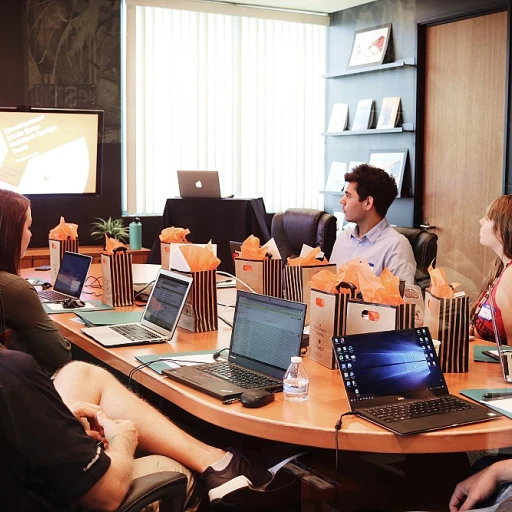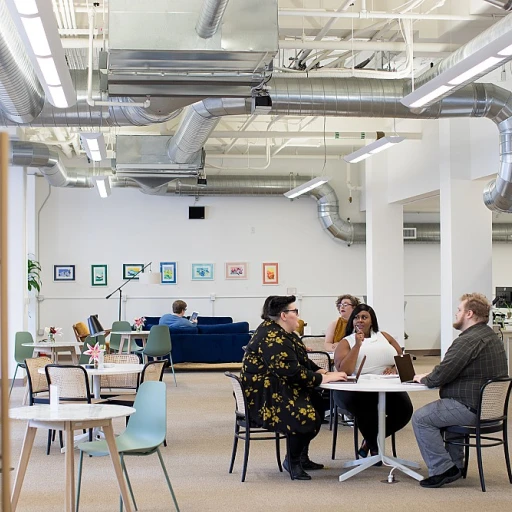
Understanding the Retention Revolution
Exploring the Dynamics of Employee Retention
The concept of the retention revolution is reshaping how businesses approach their workforce. As companies strive to keep employees engaged and satisfied, understanding the nuances of this revolution becomes crucial. Erica Keswin, a renowned workplace strategist and bestselling author, delves into these dynamics, offering insights that leaders can use to seize a competitive edge.
In today's fast-paced business environment, retaining good people is more than just a human resources challenge; it's a strategic imperative. Companies that succeed in this area often enjoy a connected company culture where employees feel valued and motivated. This sense of belonging not only boosts morale but also enhances productivity and innovation.
Leaders play a pivotal role in this revolution. By fostering a culture that prioritizes professional development and human connection, they can transform the workplace into a thriving ecosystem. Keswin's work highlights the importance of leadership in creating environments where employees feel empowered to contribute their best.
For those looking to dive deeper into how technology can enhance employee engagement, exploring innovative workplace strategies is a valuable step. As the retention revolution continues to evolve, staying informed and adaptable will be key to maintaining a great business.
The Role of Technology in Employee Engagement
The Power of Technology in Transforming Employee Experience
The role of technology in the retention revolution is pivotal for a number of reasons, and it is reshaping how businesses see employee engagement. As highlighted in the book 'Retention Revolution,' technology is not just about automating processes; it's about bringing human elements into the workplace that make people feel valued and connected. Technology facilitates open communication, a crucial factor for retaining good people. By using communication platforms, employees can stay informed and feel part of a connected community within the company. This, in turn, makes professional development opportunities more accessible and transparent, allowing employees to understand and seize competitive advantages within their current roles. Also, keeping employees engaged through technology helps in creating a culture that fosters employee retention. From performance management systems to platforms that track employee satisfaction, technology offers data-driven insights that help leaders make informed decisions. Don't overlook how these insights are integral to fostering an innovative culture, enabling leaders to encourage risk-taking and development among their teams. Moreover, the integration of AI and data analytics in the workplace is transforming leadership strategies. Leaders now have the tools to predict trends and preemptively address issues before they impact retention negatively. It's about creating a human work environment that resonates with employees' values and aligns with the company's business goals. As companies embrace technological advancements, they enable a workplace where employees feel appreciated and engaged. Therefore, adopting these technological tools is essential not only for keeping pace with the revolution but also for ensuring that employees remain connected and committed to their roles.Building a Culture of Connection
Strengthening Connections Within the Workplace
In the ever-evolving retention revolution, fostering a genuinely connected workplace remains a cornerstone for companies aspiring to thrive in today’s competitive business environment. Workplace strategist Erica Keswin, through her insights, emphasizes the significance of building a culture of connection in her book on the subject.
Creating an environment where employees feel connected and valued is paramount. Leaders can focus on bringing about a more human work experience that values employee engagement and professional development. When companies prioritize human work and connection, they don't just keep employees—they inspire them to contribute to a great business.
There are several strategies that can be implemented by companies to strengthen their internal connections:
- Open Communication Channels: Ensuring that there are platforms and opportunities for honest dialogue between employees and leadership is critical. This can facilitate a sense of belonging and transparency among all staff members.
- Inclusive Team Dynamics: Encouraging teamwork through diverse collaborations helps cement relationships and recognizes each employee as a valuable asset to the business.
- Shared Goals and Values: Aligning company objectives with employees' personal goals can foster a deeper sense of purpose and commitment among the workforce.
- Leadership Involvement: Leaders should actively participate in activities that connect with employees on a deeper level, reinforcing their dedication to the well-being of their people.
By engaging employees in ways that make them feel part of a larger mission, companies can not only seize a competitive edge but also build a workplace culture of strong, lasting connections. This approach not only keeps employees connected but also ensures that great people remain dedicated to their roles within the organization.
Innovative Approaches to Talent Management
Creative Strategies for Talent Retention
The current business landscape demands innovative approaches to retaining top talent. As noted in Erica Keswin's book on the retention revolution, companies must rethink traditional methods to keep their employees connected and engaged. More than ever, leaders need to adopt human-centric practices that prioritize people—both for their personal development and their role within the company.
The first step in revolutionizing talent management involves understanding what employees truly value. This includes fostering an environment where work is not just a place but an experience that speaks to their human need for connection and growth. A people-centric workplace encourages openness and collaboration, thus strengthening the fabric of the organization.
Leaders can also seize a competitive edge by investing in professional development programs that align with their employees' career goals. These initiatives help create a culture where talent feels valued and motivated, reducing turnover and maintaining a competitive advantage. Bringing human aspects into the workplace ensures that employees feel recognized and significant in their roles.
- Building Good People Practices: Employ innovative strategies that prioritize employee well-being and job satisfaction.
- Enhancing Human Work Experience: Develop leadership approaches that allow employees to thrive in a supportive setting.
- People-Centric Development: Offer customized professional development opportunities to build a more connected company.
Ultimately, companies that prioritize human ways of engaging with their teams will see an increase in employee retention. By integrating the insights from Keswin’s work, businesses can revolutionize their talent management strategies and build a resilient workforce ready to meet future challenges.
Measuring the Impact of Retention Strategies
Assessing the Effectiveness of Employee Retention Strategies
In the ongoing retention revolution that has greatly influenced how businesses handle their human resources, it's vital to continuously measure the effectiveness of the strategies employed. This not only ensures that the efforts are aligned with company goals but also helps in adapting to the dynamic nature of the modern workplace.
As organizations implement innovative approaches to talent management, understanding their impact becomes crucial. Here are some notable methods businesses utilize to quantify their success:
- Employee Surveys: Regular feedback mechanisms provide insights into employee satisfaction and engagement levels. Tools that enable anonymous feedback can encourage honesty, thus offering a clearer picture of areas needing attention.
- Performance Metrics: Tracking productivity and performance can reveal how engaged employees are at work. High retention rates often correlate with improved business outcomes.
- Attrition Analysis: Companies examine exit interviews to identify common themes behind resignations. By understanding why people leave, they can refine strategies to keep their good people.
- Career Development Opportunities: Offering professional development and growth pathways can be a measure of how well an organization retains its talent. Increased employee tenure often indicates effective career growth initiatives.
- Benchmarking Against Industry Standards: Comparing retention rates and employee engagement levels with industry standards can provide a perspective on where a company stands in terms of its leadership development and employee engagement initiatives.
Ultimately, a company's success in the retention revolution hinges on its ability to not only implement but critically assess its strategies. By closely analyzing the outcomes, businesses can maintain a competitive edge in attracting and keeping their most valuable asset: their people.












